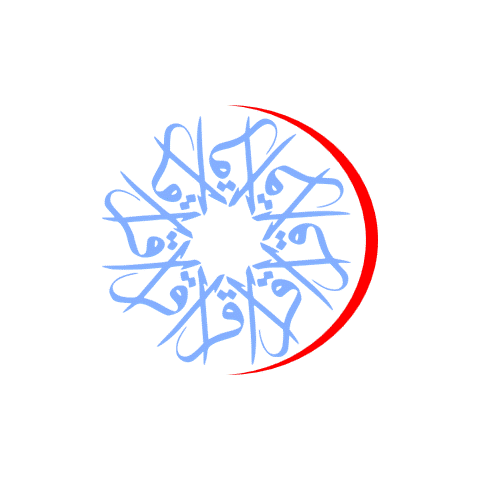2. الفصل الثاني: المستوى التنظيمي الكيميائي
Chapter 2: The Chemical Level of Organization
ترجمة: د. نهلة سلام
مراجعة: د. حسام الجنايني

Human DNA is described as a double helix that resembles a molecular spiral staircase. In humans the DNA is organized into 46 chromosomes.
بعد دراسة هذا الفصل، ستكون قادرًا على:
- وصف التركيب الأساسي للمادة.
- تحديد الجسيمات الثلاث دون الذرية.
- تحديد العناصر الأربعة الأكثر وفرة في الجسم.
- تفسير العلاقة بين عدد إلكترونات الذرة واستقرارها النسبي.
- التمييز بين الروابط الأيونية والروابط التساهمية والروابط الهيدروجينية.
- شرح كيفية استغلال الطاقة وتخزينها وإطلاقها عبر التفاعلات الكيميائية، لا سيما تلك التفاعلات اللازمة للحياة.
- شرح أهمية المركبات غير العضوية المساهمة في الحياة، مثل الماء والأملاح والأحماض و القواعد.
- المقارنة والمقابلة بين الفئات الأربع الهامة للمركبات العضوية (القائمة على الكربون) – والبروتينات والكربوهيدرات والدهون والأحماض النووية – وفقًا لتكوينها وأهميتها الوظيفية في حياة الإنسان.
أصغر وأهم مكونات جسم الإنسان الجوهرية هي العناصر الكيميائية الأساسية. في الواقع، المواد الكيميائية المسماة قواعد النوكليوتيد هي أساس الكود الجيني حيث لديها تعليمات حول كيفية بناء جسم الإنسان والحفاظ عليه منذ الحمل وحتى الشيخوخة. يوجد حوالي ثلاثة مليارات أزواج قاعدية في الحامض النووي البشري.
تشمل الكيمياء البشرية الجزيئات العضوية (القائمة على الكربون) والمواد الكيميائية الحيوية (تلك التي ينتجها الجسم). كما تتضمن الكيمياء البشرية أيضًا عناصر. لا يمكن أن تتواجد الحياة في الواقع بدون العديد من العناصر التي تشكل جزءًا من الأرض. العناصر المساهمة في التفاعلات الكيميائية وتحول الطاقة والنشاط الكهربائي وتقلص العضلات – وهي عناصر تشمل الفوسفور والكربون والصوديوم والكالسيوم على سبيل المثال لا الحصر – جميعها كان منشأها النجوم.
يمكن أن تشكل هذه العناصر بدورها مركبات كيميائية عضوية وغير عضوية هامة للحياة، يشمل ذلك على سبيل المثال، الماء والجلوكوز والبروتينات. يبدأ هذا الفصل بفحص العناصر وتحدد هياكل الذرات والوحدات الأساسية للمادة خصائص العناصر بواسطة عدد البروتونات والنترونات والإلكترونات في الذرات. ثم يبني الفصل إطار الحياة من هناك.
After studying this chapter, you will be able to:
- Describe the fundamental composition of matter
- Identify the three subatomic particles
- Identify the four most abundant elements in the body
- Explain the relationship between an atom’s number of electrons and its relative stability
- Distinguish between ionic bonds, covalent bonds, and hydrogen bonds
- Explain how energy is invested, stored, and released via chemical reactions, particularly those reactions that are critical to life
- Explain the importance of the inorganic compounds that contribute to life, such as water, salts, acids, and bases
- Compare and contrast the four important classes of organic (carbon-based) compounds—proteins, carbohydrates, lipids and nucleic acids—according to their composition and functional importance to human life
The smallest, most fundamental material components of the human body are basic chemical elements. In fact, chemicals called nucleotide bases are the foundation of the genetic code with the instructions on how to build and maintain the human body from conception through old age. There are about three billion of these base pairs in human DNA.
Human chemistry includes organic molecules (carbon-based) and biochemicals (those produced by the body). Human chemistry also includes elements. In fact, life cannot exist without many of the elements that are part of the earth. All of the elements that contribute to chemical reactions, to the transformation of energy, and to electrical activity and muscle contraction—elements that include phosphorus, carbon, sodium, and calcium, to name a few—originated in stars.
These elements, in turn, can form both the inorganic and organic chemical compounds important to life, including, for example, water, glucose, and proteins. This chapter begins by examining elements and how the structures of atoms, the basic units of matter, determine the characteristics of elements by the number of protons, neutrons, and electrons in the atoms. The chapter then builds the framework of life from there.
 جاري التحميل
جاري التحميل
